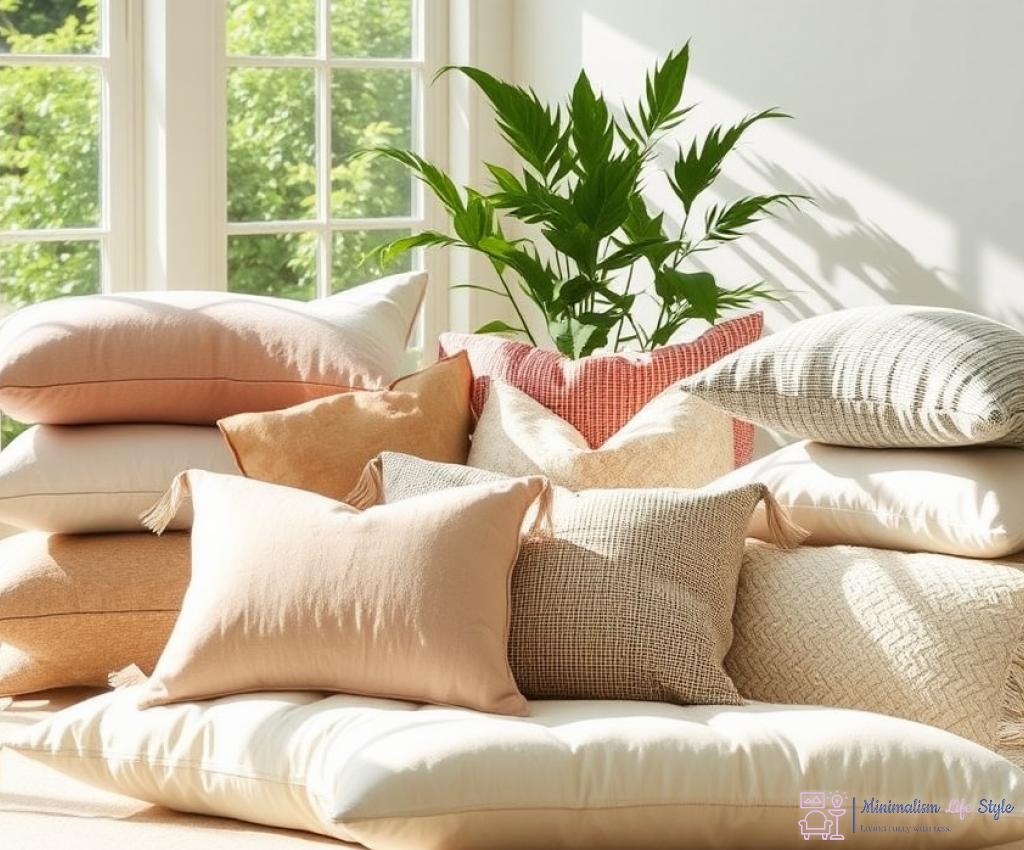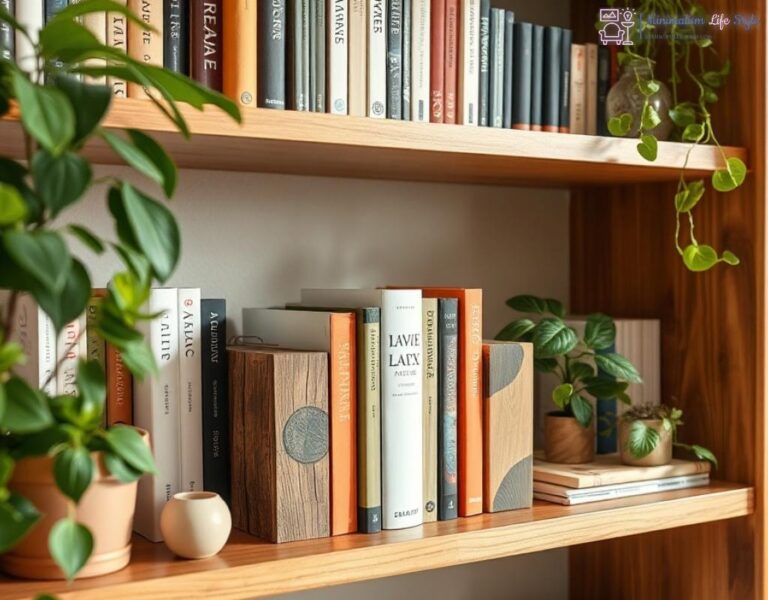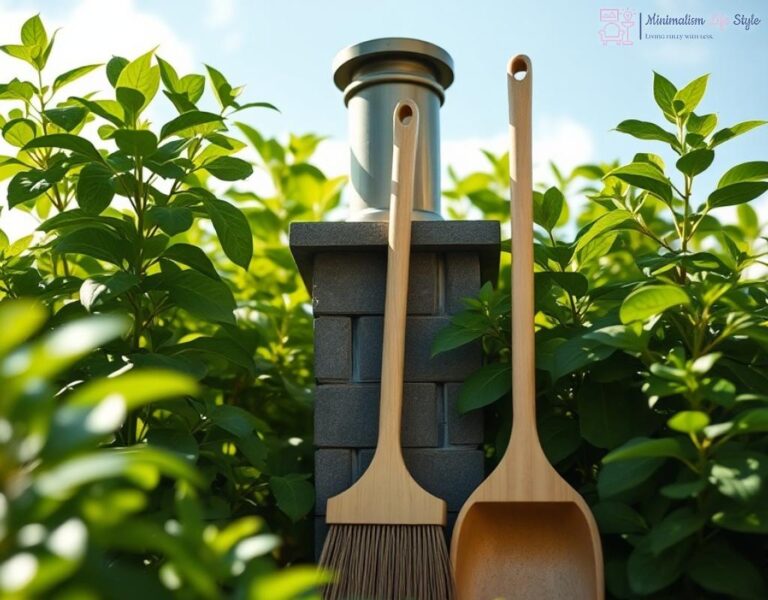The Art of Minimal Washing: Simple Techniques for Pillow Care
Pillows are essential elements of our sleep environment, contributing to comfort and overall well-being. However, they often go unnoticed until they start to smell or lose their shape. Embracing minimal washing techniques can help prolong the life of your pillows, keeping them clean and fresh without excessive wear and tear. Let’s explore some effective methods to maintain your pillows with minimal effort.
To care for your pillows, you don’t need a complex routine. Instead, a few simple techniques can make a significant difference. By integrating these practices into your weekly cleaning, you can keep your pillows in tip-top shape.
- Regular Fluffing: Fluff your pillows daily to maintain their shape and prevent lumps. This simple act redistributes the filling and enhances comfort.
- Spot Cleaning: If you notice stains, use a mild detergent mixed with water. Apply it gently with a cloth, then blot the area to remove excess moisture.
- Air Out: Every couple of weeks, take your pillows outside on a dry, sunny day. Fresh air and sunlight help eliminate odors and kill dust mites.
Knowing how often to wash your pillows is crucial. Most pillows can be washed every 6 months, but here are some factors to consider:
| Type of Pillow | Washing Frequency | Special Care Tips |
|---|---|---|
| Down | Every 6 months | Use a front-loading washer to prevent clumping. |
| Memory Foam | As needed (spot clean) | Avoid submerging in water; use a damp cloth. |
| Synthetic | Every 3-6 months | Use gentle cycle with cold water. |
By following these simple techniques and understanding the care requirements of your specific pillow type, you can significantly extend their lifespan. Embracing a minimalist approach to washing not only protects your investment but also contributes to a more sustainable lifestyle.
Choosing Eco-Friendly Materials: Pillows That Last

In the quest for sustainable living, the choice of materials plays a pivotal role in ensuring that our bedding not only feels good but also aligns with our ecological values. Eco-friendly pillows are increasingly gaining traction, offering an attractive blend of comfort and sustainability. By selecting pillows made from natural, renewable resources, you can contribute to a healthier planet while also enhancing your sleep experience.
Organic cotton, for instance, is a fantastic option for pillow covers. Grown without synthetic pesticides, this material is gentle on the skin and the environment. Moreover, pillows with organic cotton covers often feature recycled or natural fillings, making them a sustainable choice. When you choose organic, you are not just investing in a pillow; you are supporting farming practices that promote biodiversity and soil health.
Another alluring option is natural latex, derived from the sap of rubber trees. This material is not only durable but also biodegradable, ensuring that your pillow will return to the earth without leaving harmful residues behind. Latex pillows provide excellent support and are resistant to dust mites, making them a perfect choice for allergy sufferers. By investing in a latex pillow, you are opting for longevity and sustainability, as these pillows can last for years with minimal maintenance.
Furthermore, consider membrane-free down pillows. When sourced responsibly, down provides warmth and plush comfort while being a renewable resource. Look for brands that commit to ethical sourcing, ensuring the down is gathered from birds that are not harmed in the process. This way, you can enjoy the luxurious feel of down while supporting humane animal treatment.
As you explore the world of sustainable pillows, pay attention to certifications. Look for products that bear labels such as Global Organic Textile Standard (GOTS) or OEKO-TEX. These certifications indicate that the materials used have been tested for harmful substances and adhere to strict environmental and social standards. Choosing pillows with these certifications not only guarantees the quality of your purchase but also affirms your commitment to a more sustainable lifestyle.
Smart Storage Solutions: Protecting Your Pillows from Wear
When it comes to maintaining the longevity of your pillows, thoughtful storage strategies can be a game changer. Many people overlook how improper storage can lead to premature wear and tear, resulting in discomfort and the need for replacements sooner than necessary. By implementing a few smart storage solutions, you can effectively safeguard your pillows from environmental factors that may compromise their integrity.
One of the primary concerns when storing pillows is ensuring they retain their shape and freshness. Using breathable pillowcases or cotton bags during storage can help protect them from dust and moisture while allowing air circulation. Avoid plastic covers, as they trap humidity and can lead to mold growth. When selecting a storage spot, aim for a cool, dry place away from direct sunlight, which can degrade materials over time.
Another effective strategy involves how you stack and organize your pillows. Instead of compressing pillows tightly into a cramped space, consider placing them upright or on their sides to maintain their loft. If you have multiple pillows, create a designated area or shelf for them to avoid unnecessary friction and potential damage. Utilizing vertical space can also create a visually appealing storage solution, making it easier to access your pillows when needed.
| Storage Method | Benefits | Drawbacks |
|---|---|---|
| Breathable Cases | Protects from dust, maintains airflow | Requires additional purchase |
| Upright Stacking | Preserves shape, easy access | May take more vertical space |
| Climate-Controlled Spaces | Prevents moisture damage | Potentially limited availability |
By implementing these smart storage solutions, you not only protect your pillows from wear and tear but also contribute to a more sustainable lifestyle. Thoughtful care ensures that your pillows remain comfortable and functional for as long as possible, aligning perfectly with minimalist principles. In turn, this reduces waste and promotes a healthier sleeping environment. Remember, a little effort in storage can lead to significant rewards in pillow longevity.
Reviving Your Pillows: Easy DIY Refreshing Tips
Over time, even the best pillows can start to lose their freshness and comfort. Instead of tossing them aside, consider some effective DIY methods to breathe new life into your beloved cushions. These minimalistic strategies not only enhance your sleep environment but also align perfectly with sustainable living principles, allowing you to extend the life of your pillows without the need for constant replacements.
One of the simplest ways to revive pillows is by using natural ingredients you likely already have at home. These methods not only eliminate odors but also help maintain the integrity of your pillows without harsh chemicals. Here are a few refreshing techniques:
- Baking Soda Treatment: Sprinkle a generous layer of baking soda on your pillows and let it sit for at least 30 minutes. The baking soda absorbs moisture and odors. Afterward, vacuum it off to reveal a fresher pillow.
- Essential Oil Spray: Create a light spray by mixing water with a few drops of your favorite essential oil, such as lavender or eucalyptus. Lightly mist your pillows to infuse them with a calming scent and antibacterial properties.
- Vinegar Rinse: For deeper cleaning, mix equal parts of white vinegar and water in a spray bottle. Lightly spray your pillows and let them air dry. This not only cleans but also helps neutralize odors.
Another simple yet effective method to refresh your pillows is to harness the power of sunlight. Regular exposure to sunlight can naturally kill bacteria and dust mites, extending the life of your pillows:
Every couple of months, take your pillows outside on a sunny day. Lay them flat on a clean surface, allowing the sun’s rays to penetrate the fabric. Make sure to flip them halfway through to ensure both sides get an equal dose of fresh air and sunlight. This practice not only revitalizes your pillows but also gives them a fresh, outdoor scent.
Incorporating these refreshing techniques into your pillow care routine can significantly prolong their lifespan. However, it’s also crucial to maintain hygiene for optimal comfort. Here are a few quick tips:
- Regularly air out your pillows to prevent moisture buildup.
- Keep your pillowcases and covers clean by washing them once every two weeks.
- Rotate your pillows frequently to ensure even wear.
By adopting these minimalist strategies for refreshing your pillows, you can enjoy a comfortable and sustainable sleeping environment. Not only do these techniques enhance your pillows’ longevity, but they also contribute to a cleaner and healthier home.
Understanding Pillow Lifespan: When to Replace and Why
In the journey towards sustainable living, one critical aspect that often gets overshadowed is the lifespan of our everyday items, particularly pillows. Understanding when to replace your pillows is essential not just for personal comfort but also for promoting a more eco-friendly lifestyle. As we delve into the topic of pillow lifespan, we will explore the signs that indicate it’s time for a replacement and the implications of holding onto worn-out cushions.
Pillows, like all bedding, have a finite lifespan, and recognizing the signs of wear can save you from discomfort and health issues. A key indicator that your pillow may need replacing is its ability to retain shape. If your pillow no longer bounces back after being compressed, it may have lost its supportive qualities. Moreover, an accumulation of allergens such as dust mites, mold, and bacteria can contribute to health problems, making it imperative to assess your pillows regularly.
Another sign to watch for is the appearance of stains or odors. Over time, sweat, oils, and other substances can seep into your pillow, creating an unhygienic sleeping environment. If washing your pillow doesn’t eliminate these issues, it’s time to consider a replacement. Remember, maintaining a clean and healthy sleep environment is vital to overall well-being.
The quality of your sleep is directly linked to the condition of your pillows. Old and worn-out pillows can lead to unnecessary stress on the neck and spine, resulting in discomfort and disrupted sleep patterns. As pillows age, they not only lose their structural integrity but can also become a breeding ground for allergens that affect respiratory health.
Investing in high-quality, sustainable pillows can significantly improve your sleep experience while also reducing waste. When you choose to replace pillows that have served their time, you contribute to a more eco-conscious lifestyle. It’s essential to understand that choosing the right moment to replace your pillows aids in minimizing environmental impact as well as enhancing comfort. By keeping track of your pillow’s condition and recognizing when it’s time for a change, you ensure that your sleep environment remains healthy and rejuvenating.




